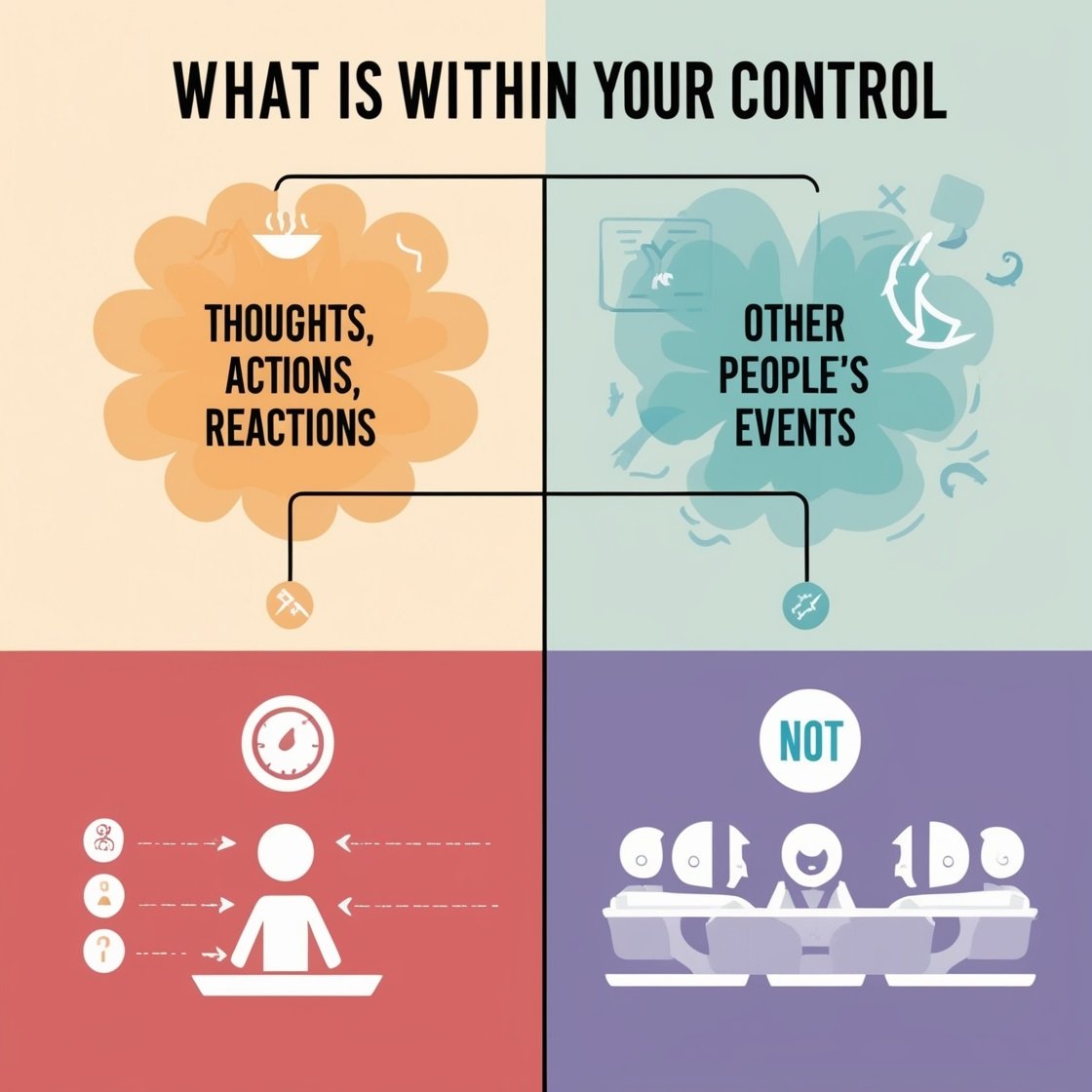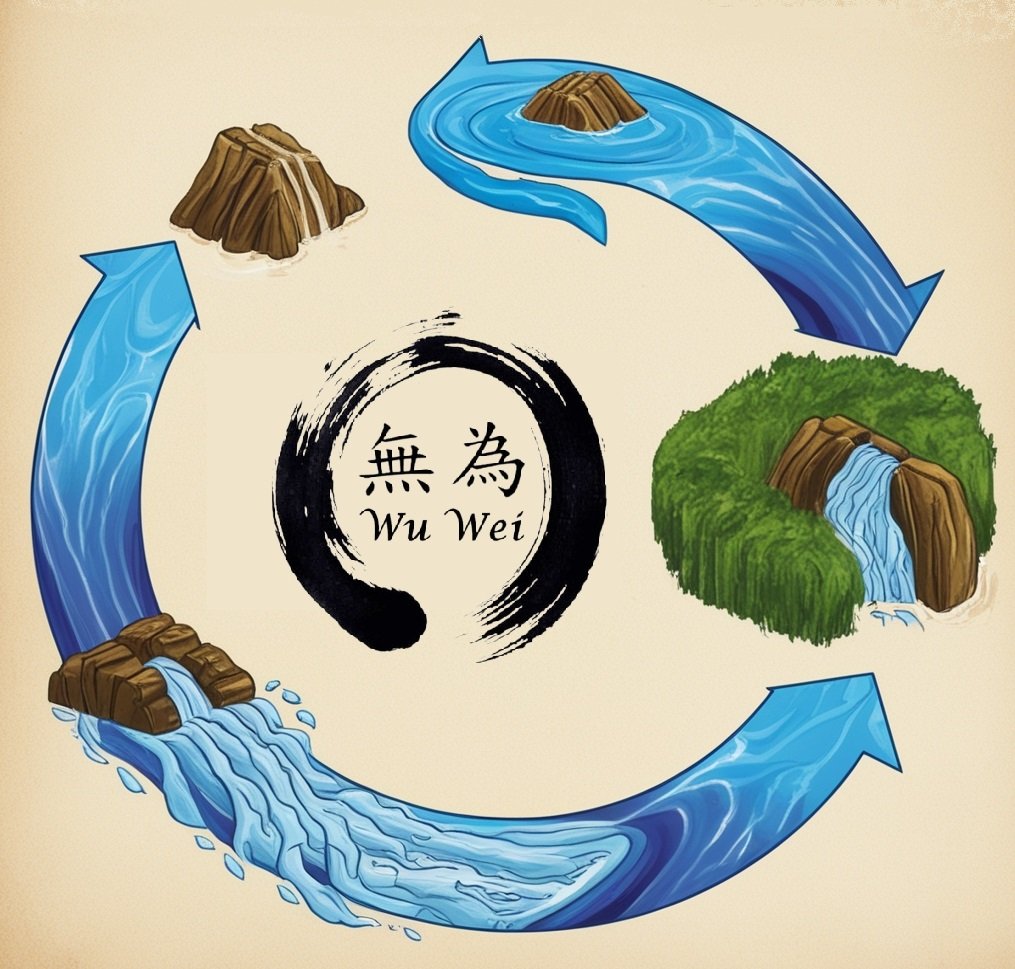What is Staoicism?

In a world where stress, uncertainty, and the rush of modern life can feel overwhelming, many of us search for ways to find balance and resilience. What if there was a philosophy that combined the timeless wisdom of both East and West, providing tools to live with more clarity and calm? Welcome to Staoicism, a unique fusion of Stoicism and Taoism that offers a powerful framework for navigating the challenges of modern life with strength and serenity.
In this post, we’ll explore the essence of Staoicism, why merging these two ancient philosophies creates an ideal path for personal growth, and how we can begin applying its principles in our everyday lives.
Defining Staoicism
What is Stoicism?
For many, Stoicism represents a grounded, practical approach to resilience. Stoic philosophy, originating in ancient Greece and Rome, teaches that while we cannot control external events, we can control our reactions, and this control is key to living a virtuous life.
Some of Stoicism’s core tenets include:

• The Dichotomy of Control: Focusing on what we can control (our thoughts, actions, and reactions) while letting go of what we cannot (external events, other people’s behavior).
• Virtue as the Highest Good: The goal of a Stoic is to live a virtuous life, where actions are guided by reason and wisdom.
• Logos: The Stoics believed in a rational order to the universe, called Logos, and sought to align themselves with this universal reason.
What is Taoism?
Taoism, on the other hand, emerged in ancient China and centers on living in harmony with the Tao (道), often translated as "the Way." While Stoicism emphasizes rationality, Taoism encourages flowing with the natural order of life, embracing simplicity, balance, and spontaneity. Key Taoist principles include:

• Wu Wei: Often translated as "non-action" or "effortless action," Wu Wei teaches us to align with the flow of life rather than forcing outcomes.
• Yin and Yang: The concept of balance, where opposites coexist and complement each other, forming the harmony of the universe.
• Simplicity and Humility: Taoism holds that living a simple, unadorned life in harmony with nature leads to peace and contentment.
Why Merge Stoicism and Taoism?
1. A Balanced Approach to Life’s Challenges
One of the core reasons to blend these philosophies is their complementary nature. Stoicism teaches us to endure hardship with rationality and emotional control, while Taoism encourages us to adapt to life’s unpredictability with grace and flexibility. Together, they offer a holistic approach to managing life’s challenges.
Consider a stressful situation, such as a difficult work project or a personal setback. Stoicism guides us to focus on what’s within our control—our effort, attitude, and emotional response. At the same time, Taoism reminds us to move with the situation rather than resist it, adapting with the least amount of force to achieve the outcome we need.
In this way, Staoicism provides both resilience through acceptance and calm through adaptation.
2. Practical Wisdom for Modern Challenges
Our fast-paced, ever-changing world brings constant uncertainty. Staoicism offers tools to handle modern stressors like information overload, career pressures, and relationship challenges.
From Stoicism, we gain the art of emotional resilience—the ability to face adversity with a steady mind and calm heart.
From Taoism, we learn the beauty of going with the flow—how to release rigid expectations and embrace life’s natural rhythms.
Together, these philosophies encourage us to live with purpose and peace, regardless of our circumstances.
3. Serenity Through Structure and Flow
Staoicism emphasizes a dual approach: Stoicism gives us the structure and discipline to handle life’s challenges, while Taoism teaches us to flow around obstacles, much like water moving around rocks in a stream.
This balance between discipline and surrender allows us to cultivate both inner strength and tranquility.
Key Principles of Staoicism
1. Resilience Through Acceptance (Stoic Control & Taoist Flow)
Staoicism encourages us to accept life’s uncertainties and focus on what we can control, while also flowing with the natural course of events. This principle combines the Stoic idea of internal control with the Taoist concept of effortless action.
Example: When we face an unexpected challenge, Stoicism helps us manage our response, while Taoism invites us to adapt to the situation naturally, avoiding unnecessary resistance.
2. Inner Peace Through Perspective (Stoic Rationality & Taoist Balance)
Using Stoic rationality and Taoist balance, Staoicism encourages us to maintain a healthy perspective on life’s ups and downs. By not overreacting emotionally and staying balanced, we can achieve a sense of inner peace.
Example: In a heated conversation, a Stoic approach might encourage us to pause and reflect before responding, while a Taoist approach would suggest we flow through the conversation with calm, avoiding unnecessary conflict.
3. Action Through Wisdom (Stoic Action & Taoist Non-Action)
Staoicism values action when needed but also recognizes the wisdom of non-action, as Taoism teaches. This principle helps us understand when to act decisively and when to step back, letting situations unfold naturally.
Example: In decision-making, Stoicism guides us toward deliberate, rational action, while Taoism reminds us not to overthink and to trust the natural flow of events.
How Staoicism Can Transform Your Life
Emotional Mastery
Staoicism provides practical tools for managing our emotions, combining Stoic resilience with Taoist detachment. By learning to observe our emotions without attachment, we avoid being swept away by them, while still acknowledging their presence.
Mindful Living
At the heart of Staoicism is mindful living—being present, intentional, and adaptable. Stoicism encourages mindful action, while Taoism teaches us to move through life with a sense of flow, embracing the present moment without anxiety for the future or regret for the past.
Deeper Connection with Nature
Taoism’s reverence for nature blends seamlessly with Stoicism’s call for living according to nature’s order. Staoicism invites us to live simply, in harmony with our surroundings, and in tune with the natural world.
Conclusion: Why Staoicism Matters Today

In today’s fast-moving, ever-changing world, Staoicism offers a unique approach to personal growth and serenity. By merging Stoicism’s rational strength with Taoism’s flowing harmony, we cultivate resilience, inner peace, and a deeper sense of purpose.
How would you apply Staoicism in your daily life? Share your thoughts in the comments below, and don’t forget to subscribe to our newsletter for more insights into living with calm, balance, and wisdom.
🌊 The Ripple Zone
🔗 Navigate the Flow: Visit the Staoic Compass to find all insights in one place.
🎥 Watch the related video : Staoicism: Inner Peace Through Stoicism & Taoism [ … ]
📩 Stay in the Flow: Subscribe to our newsletter for weekly Staoicist wisdom.
💬 Share your thoughts below: How does this resonate with your journey?



